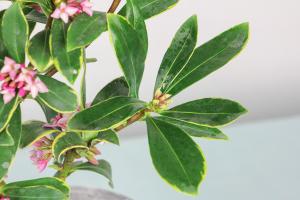A Plant Cell Model
Plant cells are unique in various ways. They contain several organelles, each performing different functions that help the plant to survive and grow. By creating a plant cell model, you can learn about the structure of plant cells and the functions of each organelle.
Materials Required
To create a plant cell model, you will require the following materials:
A styrofoam ball
A cake board or any other round base
Glue
Paints (different colours)
Paint brushes
Scissors
Card papers
Ruler
Pencil
A black marker
Toothpicks
Small plastic bags
Procedure
Follow these steps to make a plant cell model:
Draw a line around the styrofoam ball at the center. This line represents the cell membrane. Mark a point on the line and make a small cut on it.
Cut out various shapes of organelles from the coloured card paper as per the size of the styrofoam ball. You will require 4-5 chloroplasts (green), 1 mitochondria (red), 1 nucleus (orange), 1 endoplasmic reticulum (yellow), 1 Golgi apparatus (purple), and a vacuole (blue).
Use the toothpicks and small plastic bags to make the ribosomes, lysosomes, and peroxisomes. You can also use beads to represent the enzymes or proteins present in the organelles.
Paint the organelles and ribosomes with the appropriate colours and let them dry.
Use the scissors to make small holes on each organelle so that you can insert the toothpicks into them.
Insert the toothpicks into the holes and stick the other ends into the styrofoam ball at their respective places.
Use a black marker to label each organelle with its name and function.
Functions of Plant Cell Organelles
Cell Membrane: It controls what goes in and out of the cell.
Chloroplasts: They are responsible for photosynthesis, which converts sunlight into energy (glucose).
Mitochondria: They are known as the powerhouse of the cell as they produce energy (ATP) through cellular respiration.
Nucleus: It contains genetic material (DNA) and controls cellular activities.
Endoplasmic Reticulum: It helps in protein synthesis and transportation within the cell.
Golgi Apparatus: It modifies, sorts, and packages proteins and lipids to transport them to their destinations.
Vacuole: It stores water, nutrients, and waste materials and also plays a role in maintaining turgidity and shape of the cell.
Ribosomes: They are involved in protein synthesis.
Lysosomes: They contain enzymes that break down complex molecules and recycle them.
Peroxisomes: They break down fatty acids and also play a role in detoxification of the cell.
Conclusion
Creating a plant cell model is an interesting and easy way to learn about plant cells and their organelles. By understanding the functions of each organelle, you can appreciate the complexity and beauty of plant cells and their importance in our lives.

 how many times do yo...
how many times do yo... how many planted tre...
how many planted tre... how many pine trees ...
how many pine trees ... how many pecan trees...
how many pecan trees... how many plants comp...
how many plants comp... how many plants can ...
how many plants can ... how many plants and ...
how many plants and ... how many pepper plan...
how many pepper plan...






























